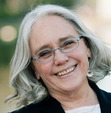Edith Maxwell's Blog, page 49
March 24, 2023
The Secret Language of Victorians — Welcome Guest Mary Winters
There’s nothing better than a new intriguing series and Murder in Postscript fits the bill! Mary Winters also writes mysteries as Mary Angela. We’ve been on several panels together and she’s always a delight.
Mary: When you imagine life in Victorian London, you might think of colorful fans, large bouquets of flowers, and enormous dresses—with good reason. In the 1860s, dresses were so large that Victorians hired carpenters to widen their door frames. You might also recall the numerous etiquette books produced during this time period, which included everything one should not do, including whistling, touching one’s ears, and scratching one’s head. Positively head-scratching!

But Victorians were masters of circumventing the rules they so revered. They invented new ways of talking without saying a word.
Imagine a man staring across the ballroom at a would-be lover. He couldn’t approach her without an introduction, and she certainly couldn’t approach him. But if she had a fan, a requirement in any stuffy ballroom, and if he knew the signals, he could hold a clandestine conversation with her. A fan across the cheek meant she loved him. A fan through the hand meant she hated him. And if she displayed a particular number of spokes on the fan, he could meet her at that hour for a private conversation.
Like fans, flowers had secret meanings, too. In fact, the first dictionary of flowers was published in this time period. Most people know that red roses signify love, but Victorians knew many other meanings. Yellow carnations meant disdain, begonias meant beware, and columbine meant foolishness. General floral characteristics had implications as well. For instance, striped flowers were often signs of refusal. Even the way the flowers were given meant something. If given with the right hand, the general answer was yes. If given with the left hand, the answer was no.
Letters, while less secretive, also held clues to the sender’s situation. Stationery with a black edge and black seal meant the sender was in mourning. A red seal was often used by men while rose-colored seals were preferred by women. By the 1880s, other colors were being used to reveal emotion, stymied so frequently in social interactions.
Like most Victorians, my sleuth, Amelia Amesbury, is adept at subversion. Despite being a countess, she pens a weekly agony column at the penny paper under the pseudonym Lady Agony. Her editor is childhood friend Grady Armstrong, and he passes along the missives in secret. New to the peerage, Amelia is used to work, and spending her days helping others, even from afar, gives her life purpose. When she finds one of her readers dead in St. James’s Park, it also puts on pressure. She knows she must find whoever did this and bring the person to justice.
The next time you picture the Victorian era, go ahead and imagine fans, flowers, and letters. Just remember their secret meanings, and tip your hat (It’s okay! It’s in the etiquette books.) to the Victorians’ contributions to the world of mystery.
Readers: Would you want to live in the Victorian era? What would you like about it and what is a no way for you?
 © Julie Prairie Photography 2016
© Julie Prairie Photography 2016Bio: Mary Winters is the author of Murder in Postscript, the debut novel in A Lady of Letters mystery series, which received a starred review from Library Journal. A longtime reader of historical fiction and an author of two other mystery series, Mary set her latest work in Victorian England after being inspired by a trip to London. Since then, she’s been busily planning her next mystery—and another trip!
March 23, 2023
How I set realistic writing goals
By Liz, so happy to welcome spring!
I’m one of those writers who has to continually psych myself out to get work done.
It’s not that I don’t love writing—like, the actual act of writing. I do. I’ve always loved it. When I’m not doing it I have withdrawal. Hence the whole pursuing the writing career thing.
But when I feel like the stakes are higher, it’s harder to get the work done. Even when I love what I’m writing.

I’m still not sure about the psychology behind this affliction. Believe me, I’ve wasted many an hour trying to figure it out (hours I probably should have been writing). It could be fear of finishing a project and people hating it. Or fear of finishing a book and never selling it, or never getting another contract. Or, or, or. So many possibilities and in the end it doesn’t really matter, does it? I’ve just gotta get the work done.
I’ve tried many habits over the years—a daily word count, bullying myself into writing during every spare moment I have, waking up super early to get writing time in, reporting on my progress to other writers. I’ve bought multiple planners and used mind maps. I’ve tried to assign myself specific scenes to write in a day.
The daily word count actually works best for me—until I either get super stuck in the mucky middle, or until I bypass my word count one day and do double the words, then beat myself up every other day for not doing MORE than my word count. Or until I get busy that day and I have no clue what I’m actually writing about next…you get the idea. Same with assigning myself specific scenes per day. The accountability works until someone gets busy and it fades away.
It can feel like a great big vortex of frustration, right?
Usually when I’ve tried one of these things (or all of them at once) and still find myself coming up short, I’m really hard on myself. Which is a huge problem for me in general, but I think it’s true for a lot of creatives. We feel pressure—mostly from ourselves, dare I say—to be producing more, creating more, DOING more.
But when is enough simply enough? When do you say, hey, Liz, good job today? Let’s go eat ice cream and watch some trash TV?
Here’s what’s been working for me, in three easy steps:
Realizing that “productivity” is not the goal. Productivity, I’ve found, is an elusive concept. For one person, it could mean writing three books a year. For another, it could mean one blog post per week. Producing an excellent piece of writing (book, blog, whatever) IS the goal. Trust that the projects you’re meant to work on, you’ll work on.Setting aside specific hours for writing. Whether your time is 6 a.m. to 8 a.m., 10-10:30 p.m., or anything in between, that’s your time. If you complete it, YOU’VE COMPLETED YOUR GOAL. There’s none of the, “Well, I could’ve done more” BS allowed.Being kind to myself. I’ve started congratulating myself for showing up for my time block. You can treat yourself to a snack afterwards, or a show, or whatever floats your boat. It works way better than the flogging.These little tweaks to approaching my day have helped me feel happier, more productive and less stressed about getting more and more things done.
Readers, have you made adjustments to something in your work or life that’s helped you? Tell me in the comments below.
March 21, 2023
Wicked Wednesday: Strong Fictional Women
For our Strong Women month of Wednesdays, so far we’ve discussed real women. Let’s turn to made-up ones!

Wickeds: Let’s chat about one favorite fictional strong woman, from your writing or someone else’s. How is she strong, and how does she express it?
Julie: Since there’s a new Veronica Speedwell book (8!) out this month, let me sing her praises. Veronica is her own woman, making her way in 1880’s England. She’s a lepidopterist, fiercely independent with a mysterious background she uncovers as the books progress. I love this series, and how Veronica takes the life she’s expected to live as a woman, and upends it to make it work for her. I’ll be forever grateful to Sandra Wong for introducing me to this series.
Jessie: I’m going to go with a classic. For me, Jane Austen’s Eliza Bennet is a long-time favorite. The stakes she, and her entire family faces if she does not marry well are harrowing and yet she continues to follow her own instincts despite incredible pressure from society and her own family to ignore them.
Sherry: Julie and Barb Goffman both encouraged me to read the Veronica Speedwell books so I finally read the first one and loved her. Jessie, you picked another favorite of mine! I recently read Hide by Tracy Clark and loved Detective Harriet Foster. She’s strong and damaged, compelling and complex — everything I want to read in a female protagonist.
Edith/Maddie: I cast my vote for Maisie Dobbs in the long-running historical series by Jaqueline Winspear. Maisie, who survived trauma, has a quiet but fierce determination to see justice served. She runs her own investigative business, she serves her country, and she finds and honors love in unusual places.
Liz: I have to go with Elizabeth Best from the Thursday Murder Club books. She is HILARIOUS – an ex-spy who lives in a retirement community who created the Thursday Murder Club with three friends. She is super smart, resourceful and excellent at managing those around her to get what she wants or needs.
Barb: Liz, I love Elizabeth Best. I’m going to go with Karen Pirie, the wonderful protagonist in six books by Scottish author Val McDermid. I gobbled them up, one after another, when we were in Scotland last year. Coincidentally that was just in time for the first season of the TV show Karen Pirie, in the US on Prime, also absolutely excellent. Karen begins her life as a detective awkward and underestimated, but certain of what’s right and wrong. She grows throughout the series into a strong, confident woman, boss, and investigator.
Readers: Who is your favorite strong fictional woman?
March 20, 2023
Guest/Commenter Kait Carson
Happy Solstice, all, from Edith and Maddie, delighted to welcome real spring.
And even happier to welcome our New England author friend and frequent Wickeds commenter, Kait Carson. Her second Hayden Kent mystery re-releases today, and it sounds like a hot one!

Here’s the blurb: Underwater, no one hears your screams. Hayden Kent’s mentor discovers her son Mike’s body, fully clad in scuba gear, beneath the pedestrian pier on Pigeon Key. She turns to Hayden for solace at the tragic accident. Rumors of vast riches and disgruntled investors flew through the Keys when Mike discovered a sunken Spanish galleon. Then the man changed his will a few days before his death disinheriting everyone but his son. Are the two events related? Hayden’s dive on the treasure site uncovers gold, and evidence that Mike’s death was no accident. As the suspect list grows, so do threats against Hayden who must find the killer before she becomes the next victim.
Inciting Incidents and Strong Women
Thank you, Wickeds, for inviting me to blog with you today. I come bearing gifts. Death by Sunken Treasure, the second in the Hayden Kent Mysteries is re-released today. To celebrate, Death by Blue Water, the first in the series is $0.99 for a limited time. When I lived in Florida, I had a friend from Louisiana – she advised me to always offer lagniappe. A little something extra.
Readers often ask how much of Kait is in Hayden Kent. After all, there are undeniable similarities. We’re both Scuba divers, runners, paralegals, owned by cats—I mean cat owners. Check, check, check, check. It’s a good question. Wasn’t it Hemingway who exhorted authors to “write what you know”? Despite the similarities, Hayden is her own woman. Our joint interests sprang from a different well.
When I sat down to write Death by Blue Water, I lived in the Crown of Maine. That’s the very tippy top of the State. It’s a culturally diverse area that includes the French speaking St. John Valley, whose settlement was immortalized in the Henry Wadsworth poem Evangeline, and the heavily forested “English” area known as the Allagash.
It was November, snowing, and the rapidly rising snowdrift outside my window reminded me winter had a long way to go. More than anything I wanted to slide into warm, blue, water and feel the soft kiss of sun on my cheek when I surfaced. To quell my longing, I flipped through my dive logs.

Kait smiling underwater
My heart ached with the memories. I almost tasted salt on my lips. Then I found an entry about a dive on a deep wreck named The Thunderbolt and how my heart stuttered when a plastic bag floated out of the wheelhouse of the ship. At one hundred feet below the surface, that bag appeared to be a hand fluttering and shedding skin as it rose toward me. Death by Blue Water was born.

Now I needed a protagonist. She had to be a scuba diver and a believable investigator. The diving was easy. She lived in the Florida Keys. For investigative purposes, I made her a paralegal. Legal professionals, like law enforcement, look at an investigation from the small end of the telescope. The investigation and research geared towards eliminating the unprovable to find the diamond hard nugget of truth. Hayden Kent was skilled in both areas. She demanded to be a runner and cat owner. I’d not thought to give her a hobby beyond diving. Nor had I given her a cat. In the early chapters of the first draft, she owned a German Shepherd. So much for my plans. She wanted to run, and even though a dog would be the ideal running companion, Hayden reached into her backstory and plucked out Tiger Cat. I should have known this character would be trouble.
Once the plastic bag turned into a body, the inciting incident was in place. Hayden took control of the story and developed her own strengths and vulnerabilities. She led the investigation down paths I hadn’t thought of. Sometimes her antics plucked my last nerve, but she always managed to keep the story, and the need for a solution, as her primary goal. In the end, I admired her. So much so that when I visited Pigeon Key later that year, and spotted something that looked like it might be a diver under the pedestrian boardwalk, I let Hayden take the lead and solve the mystery of Death by Sunken Treasure.
My books spring from my imagination, but once the inciting incident is in place, it’s the characters who take command and tell the stories.
Readers: do you wonder how protagonists evolve? Writers, do you listen to your characters?

Kait Carson lives with her husband, four rescue cats and flock of conures in the Crown of Maine where long, dark, nights give birth to flights of fictional fantasies.
You can reach Kait and sign up for her newsletter at kait@kaitcarson.com. Or follow her on: Instagram: kaitcarson2; Twitter: @kaitcarson; Facebook: Kait Carson; Facebook Author: Kait Carson Author; Pinterest: Kait Carson; Amazon: Kait Carson; BookBub: Kait Carson; Linked In: Kait Carson
Getting my Ducks in a Row
Edith/Maddie here, on the first day of spring.
Spring! Spring is a time of growth, of rebirth. It’s when we celebrate the cycle of life and renewal. When we pause and notice the equilibrium between night and day, winter and summer. Right?

Well, what about feeling out of equilibrium, even at the equinox? Let me explain.
I’m a writer. (The chorus of “DUH” resounds.) I make my living with my imagination, my heart and my brain, and, very importantly, my hands. I’ve already been through two hand surgeries since fall of 2020. One was the wrong one, one the correct one (and yes, I did engage a very good personal injury lawyer, thank you S. and H. [you know who you are], and I can’t say anything else about that except that satisfaction was had).
You’d think that’d be enough in the medical procedures department, on top of previous knee replacements, shoulder repair, and more. But, no. Tomorrow I go in for what my (good, second) hand surgeon described as minor finger surgery. I’ve had a cyst resting on the nail bed of my middle right finger for a couple of years. It corrodes the nail, swells with fluid every week or two causing me a lot of distress, and when it resolves, it’s both painful and gross.

The doc said the cyst is related to the arthritis in that last joint.
All that said, I am a person in my second S decade, and the end of (my) life isn’t as theoretical as it once seemed. I am reasonably healthy and hearty, don’t worry, but all kinds of s**t can go down during surgery – even on a finger. Plus, I am a worst-case-scenario kind of worrier.
So, I’m checking the ducks, with a mind to the ducklings who will survive me.

Wills and estate planning done? Check.
Literary executor assigned? Check (see willing son on left).
Passwords to my entire universe handed over? Check.
Family photos scanned and labeled? Oops, fail.
Basement clear and decluttered? Oops, again.
Closets … ? Ah, forget about it.
Bills paid, manuscripts turned in, charity donations made? Check.
Do Hugh and my sons, my sisters and brother, my dear personal friends and cherished author pals know I love them? Check, without question.
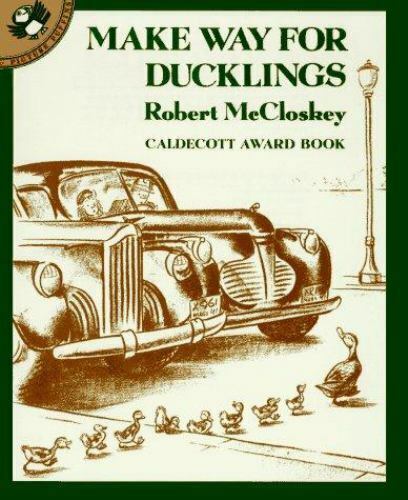
I think the important ducks are lined up. I fully intend to see you all on the other side (that is, Wednesday). And, please, make sure your own duckies know you love them.
Readers: What tangibles do you plan to pass along? How about intangibles? (And have you ever had a cyst removed from a nail bed?)
March 17, 2023
St. Patrick’s Day – Love it or Leave it?
It’s March 17 again, Wickeds. Do you love it, wear green, eat soda bread and drink green beer, celebrate your Irish heritage (or pretend to have some)? Or would you rather ignore the festivities and go about your business? Dish!

Jessie: I love to celebrate, at least in a small way. My kids love corned beef so I always buy one for the day and a second to pop into the freezer for another occasion. Sometimes I also make soda bread. This year, a monthly gathering I host falls on the day so I will be throwing a party with green decorations and a themed menu!
Julie: I love the celebration of Irish heritage, though in Boston it can get messy with drinking and partying. I make a wonderful Irish soda bread (here’s the recipe) and will happily eat a boiled dinner. My ancestry has many threads that lead back to Ireland, and traveling there is on my bucket list. So yes, a day to celebrate. But not in a bar.
Barb: Saint Patrick’s Day is huge in Key West, involving as it does a combination of drinking and costumes, which are irresistible to most of the citizenry. Two St. Patrick’s Day memories stand out for me. In March, 2020, the city had been shutting down for the pandemic for a few days. The port was already closed and the hotels and short-term rentals were ended. At 5 p.m. on Saint Patrick’s the bars shut, an irrefutable sign to all that this party city was closed for business. My husband Bill was out taking pictures and many Key Westers wandered the streets in a daze. The other memory is the time when Lucy Burdette and I and some other friends booked a literary walking tour, completely forgetting it was Saint Patrick’s Day. As we toured around the houses and haunts of Ernest Hemingway, Tennessee Williams, Elizabeth Bishop, Robert Frost, Shel Silverstein, Thomas McGuane, etc, etc, the revelry around us increased exponentially and by they end we were dodging partiers in the streets. Still it was fun and funny.

Cindy and Mac McCausland ready for St. Patrick’s Day.

St. Patrick’s house decorations in Key West.
Edith/Maddie: I also love St. Patrick’s Day, drawing on my Flaherty ancestors. These days I mostly get into the holiday for food inspiration, but I draw the line at green beer. I had fun writing Four Leaf Cleaver and kind of going all out on American interpretations of the Irish.
Liz: I love it too but I don’t do anything formal. I’ll probably hit up a coffee shop for a shamrock latte or something fun!
Sherry: I love the green hats on our photo! I love it and claim to have a bit of Irish on my paternal grandparents side. I do love soda bread but haven’t had any this year.
Readers: Will you be nibbling on soda bread in your green shirt, or hiding from the festivities?
March 16, 2023
A Wicked Welcome to Julie Carrick Dalton
by Julie, having a great time at Left Coast Crime
I am delighted to welcome Julie Carrick Dalton to the blog today. Her first book, Waiting for the Night Song, was released last year. The Last Beekeeper was released on March 7. Thank you for being here, Julie.

The inspiration for my second book The Last Beekeeper came to me after I stumbled on a pile of dead bodies in my yard. They were bees, not people, but I was devastated. I was furious. I was scared.
As a beekeeper, I took pride in the health of my bees, and last I had checked, they were thriving. I crouched on the ground, staring a pile of 40,000 otherwise perfect bees. I knew enough to understand this wasn’t Colony Collapse Disorder, in which bees fly off and mysteriously never return. It couldn’t have been a virus or parasite because it happened in a single day.
That only left one explanation: Poison.
But who would poison my bees? And why?’
I looked around my suburban neighborhood, scrutinizing the immaculate landscaping my neighbors took pride in. Did one of them murder my bees? Did my docile, non-confrontational bees scare them? Couldn’t they have approached me about it instead of destroying the hive?
Whoever it was, I refused to let them win. I restocked with new bees and took extra care to make sure the hive was safe and protected. I often sat on the ground near the hive watching bees buzz away from the hive while others returned with the pouches on their hind legs bulging with bright yellow pollen. Watching bees put me into a near meditative state. The hum calmed me, the vibrations soothed, and the harmony of the hive inspired awe.
Then, the following August, it happened again. A mass murder. The hive was dead.
I raged, cursed, cried. I looked at everyone in my neighborhood with suspicion. Was it you?
I consulted with other beekeeper friends and tried to unravel the mystery. I soon came to the conclusion that no single person intentionally harmed my hive. But collectively we all were guilty.
In the US, we permit homeowners, landscapers, and farmers to apply chemicals proven to harm bees. Other countries banned these toxins years ago. But we Americans love our green lawns, corn, and soybeans too much, so we heap on the herbicides and pesticides and pretend not to see what we’re doing to our pollinators.
Our refusal to face the truth comes with a price. Every year we lose billions of bees. Those bees are responsible for pollinating one third of the food humans consume.
After I realized the poison likely came from a lawn product someone in my neighborhood inadvertently applied, my anger changed. I was no longer hunting down an individual who had killed my bees. I was looking in the mirror. Although I never use chemicals on my lawn or garden, I consumed food grown by big agriculture, and that made me complicit.
I wondered what was happening to the native pollinators? How were the wasps, mosquitoes, yellow jackets, bumblebees, and butterflies tolerating these toxins?
What if they disappeared too? What if all the pollinators died?
That what if question was the inspiration for my second novel, The Last Beekeeper, in which I imagine a near-future world without bees. The Last Beekeeper is about the tenuous relationship between a beekeeper and his daughter as the world’s pollinator population dies off, launching the world into agricultural and economic crisis. It’s about found family, speaking truth to power, and unquenchable hope in the face of adversity.
The story follows Sasha, the daughter of the Last Beekeeper, as she tries to unravel the mystery about her father’s involvement in the death of the last known honey bee colonies. What did he know? Why had he chosen to go to prison rather than turn over his research? And what exactly was Sasha’s role in the loss of the final hives? Her childhood memories are fuzzy, but she senses there’s something important her father isn’t telling her.
Writing this story helped me process my own grief over losing my bees, and it pushed me to confront my culpability. I’m trying to do better. I haven’t given up on the bees, and, like Sasha, I refuse to give up on hope.
In August this past year, I moved from my suburban neighborhood to an apartment downtown Boston. In April, I will be installing a beehive on my building’s roof and planting a wide variety of bee-friendly plants.
Wish me luck! Our future depends on it.
Have you ever investigated a mystery and discovered you were the guilty party? Have you ever read or written a character who had to confront their own culpability? How did this information change you or the character?
About the The Last Beekeeper:It’s been more than a decade since the world has come undone, and Sasha Severn has returned to her childhood home with one goal in mind―find the mythic research her father, the infamous Last Beekeeper, hid before he was incarcerated. There, Sasha is confronted with a group of squatters who have claimed the quiet, idyllic farm as their own. While she initially feels threatened, the group soon becomes her newfound family, offering what she hasn’t felt since her father was imprisoned: security and hope. Maybe it’s time to forget the family secrets buried on the farm and focus on her future.
But just as she settles into her new life, Sasha witnesses the impossible. She sees a honey bee, presumed extinct. People who claim to see bees are ridiculed and silenced for reasons Sasha doesn’t understand, but she can’t shake the feeling that this impossible bee is connected to her father’s missing research. Fighting to uncover the truth could shatter Sasha’s fragile security and threaten the lives of her newfound family―or it could save them all.

Julie Carrick Dalton is the author of The Last Beekeeper and Waiting for the Night Song, a CNN, USA Today, Newsweek, and Parade Most Anticipated novel. She is a frequent speaker on the topic of fiction in the age of climate crisis at universities, museums, libraries, and conferences.
You can find Julie on Twitter @juliecardalt, on IG @juliecdalton, on FB @juliecarrickdalton, or her website, juliecarrickdalton.com.
March 15, 2023
Wicked Wednesday: Strong Older Women
We continue our Strong Women theme for the month this week.

Wickeds: who is – or was – a strong real woman over sixty you admire(d) for her strength? Is/was she strong in character, in muscles, in emotional intelligence? Describe her strength. Bonus points for pictures.
Julie: The first woman who comes to mind is Eleanor Roosevelt. Though she was inspiring throughout her life, post WWII while in her sixties she became a delegate to the United Nations, and became the first chairperson for the United Nations Commission on Human Rights. She wrote, remained politically active, and took on many other roles well into her 70’s. An inspiration.
Liz: I have to go with Jane Fonda. She’s such an inspiration as a still-working actress (who doesn’t love Grace and Frankie?) and her advocacy work. Her latest efforts are focused on the environment – and she was instrumental in delivering enough support to the UN from 157 countries to get a Global Ocean Treaty in place just this year.
Edith: Liz, Jane Fonda has been an activist for decades. Good pick, as is Eleanor Roosevelt. I’m thinking of Madeline Albright. She became US Ambassador to the United Nations at age fifty-six and the first female Secretary of State at sixty, and received the Medal of Freedom at seventy-five. Yes, she was involved in several controversies, but one involved asserting her opinion that women should support other women. At root, I applaud that statement.
Barb: I’m laughing because “old” seems to be a moving target. I’ve blown by several ages I thought were old when I was younger, but happily, I’m still here. I find now that the women I admire are the ones who are just a little older than me–5 years, 10 years. I love watching how they navigate this part of life, taking away tips as I can. They’re not names you’d recognize. Well, some are writers so maybe you would. But I don’t think any of them would appreciate being on my list of “older women,” so they will remain anonymous for now.
Jessie: Like Barb, my pick is a woman who is not a household name, but has been a huge influence on me for the past twenty years. Over that time I have had the privilege of seeing her life up close, watching her try new things, follow her dreams, and pass through extraordinary grief with grace. Her relentless curiosity and interest in expanding her world year over year are two of her greatest strengths. I don’t think I would be the person that I am today without her influence.
Sherry: After watching the Oscars I’m adding Michelle Yeoh (winner of Actress in a Leading Role and she’s only 60) to my list of women I admire. In her acceptance speech she said, “And ladies, don’t let anybody tell you you’re ever past you’re prime.” Cheers to that!
Readers: Who is your favorite strong older woman?
March 14, 2023
“Growth occurs outside your comfort zone” from Guest Liz Milliron
Edith/Maddie here, still adjusting to the time change. But I’m not too bleary to welcome Liz Milliron with her latest historical Homefront Mystery. I love this series and particularly look forward to reading The Truth We Hide, which comes out today. One lucky commenter will win a copy of the book!

Here’s the cover copy: May 1943. Betty Ahern is studying for her private investigator’s license when a new client—Edward Kettle—hires her to clear his name after he was dismissed from his job at the American Shipbuilding Company. When Edward is brutally murdered, the dead man’s sister hires Betty to finish the original job and find the killer. The job hurls Betty back into the world of wartime espionage, but with a twist: Edward Kettle was a homosexual. Did he know something about underhanded activities at American Shipbuilding? Or was his secret life the motive for murder?
Once again, Betty must unravel the mystery, which requires uncovering truths that others would prefer to keep hidden—a job that threatens not only her morals and beliefs, but also her life.
“Growth occurs outside your comfort zone.”
That was what a friend of mine, who does endurance events, told me once. What she meant was that it’s only when we feel a little uncomfortable do we really push ourselves to change and be better.
Last year about this time, I signed the contract for books 4-6 of The Homefront Mysteries series. Which meant I had to start thinking of an arc for the books and an idea for the fourth book. I forget exactly how it happened, but an idea occurred to me of how I could both push my protagonist, Betty Ahern, ahead in both her chosen career and as a person.
The problem was, I found the idea rather daunting.
I wanted Betty to have a client who was gay. That wouldn’t be very challenging today, but the series is set in the early 1940s. The LGBT+ community was not just underground, it was submerged. People did anything and everything they could not to be discovered.
Not only that, but Betty is also Catholic. Pre-Vatican II Catholic. It would have been taught to her from a very early age that homosexuality is sinful. She’d be getting in from all sides. What better way to push her out of her comfort zone that provide a client who is the opposite of everything she’s ever learned was right?
I liked the idea, but I hesitated. Was I the right person to tell this story? I didn’t know anything about the LGBT community in the 40s. Sure, I wasn’t going to attempt to tell the story using the POV of someone in that group, but still. Could I do this?
This is where the power and beauty of Sisters in Crime comes in. I had conversations with Edwin Hill and John Copenhaver, both great authors in their own right.
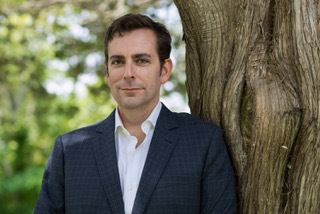

Edwin Hill (left), John Copenhaver (right)
I told them my idea. Both supported me without hesitation. Not only could I write this story, I should. John gave me sources to learn about gay culture of the times. We talked about what I wanted the resolution to be – and what I wanted to stay away from. I began writing.
When I finished, I sent the manuscript off to my editor at Level Best. She liked it. But she questioned some of my choices. I’d touched on some hot-button issues. Did I really want to go there?
My heart did, but again, I was afraid. Maybe I’d gone too far and crossed the line I hadn’t wanted to cross. I reached out to John and Edwin again. And again, they confirmed I was on solid ground. Yes, I’d written some ugly truths. But they were truths. And they needed to be told.
Fiction is like that. As someone said, it’s a lie that tells the truth. And while I wasn’t part of the LGBT community, I had a right, and a duty, to tell that truth. Because before you can grow, you have to face facts.
Facts, the truth, are often uncomfortable. But as my friend pointed out, that’s where real growth begins.
Readers: What’s a time you found yourself in an uncomfortable spot. How did it help you grow? I’ll send one commenter an ebook or signed print copy of The Truth We Hide.
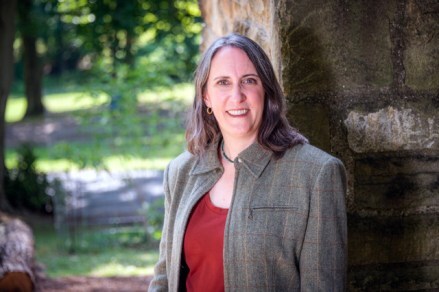
Liz Milliron is the author of The Laurel Highlands Mysteries, set in the scenic Laurel Highlands, and The Homefront Mysteries, set in Buffalo NY during the early years of World War II. She is a member of Pennwriters, Sisters in Crime, International Thriller Writers and The Historical Novel Society. She is the current vice-president of the Pittsburgh chapter of Sisters in Crime and is on the National Board as the Education Liaison. Liz splits her time between Pittsburgh and the Laurel Highlands, where she lives with her husband and a very spoiled retired-racer greyhound.
March 13, 2023
Celebrate!
Jessie: In New Hampshire where there is yet more snow in the forecast!
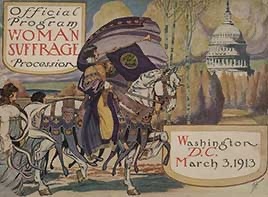

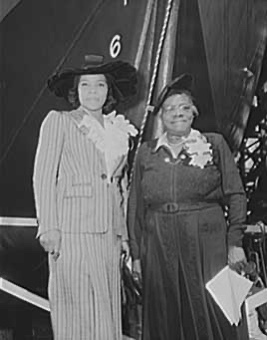

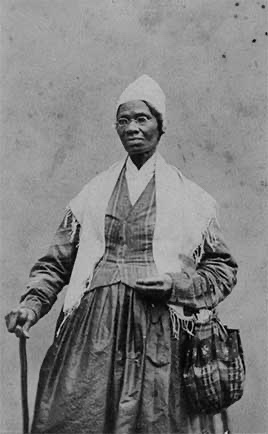


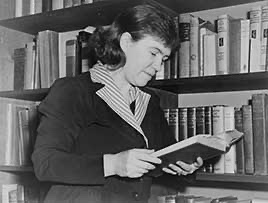
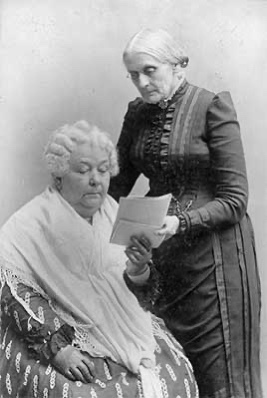
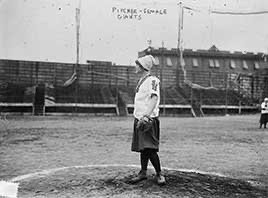

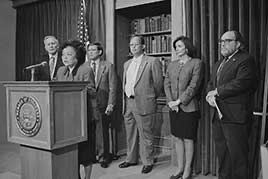

As you are probably aware, March is Women’s History month. Considering I am a woman who writes historical novels with mostly female protagonists, I am sure that is not surprising that this is a month that interests me a great deal. What does surprise me is how each time March rolls around another aspect of the topic piques my interest. There are so many interesting things to explore and consider even by visiting the official website put on by the federal government. As I look over all the different exhibits showcased there, I find myself in awe of all that has come before and feel inspired for else what may lie ahead. There are so many areas covered on the website that there is something for everyone!
For example, the website includes links to:
Drawn to Purpose: American Women Illustrators and CartoonistsHetty Green the “Witch of Wall Street” was Born: This Month in Business HistoryTupperware! (partially funded by the National Endowment for the Humanities) Women’s Rights National Historical ParkWomen Suffrage: Women Fight for the Vote. Help the Library of Congress improve access to women’s suffrage history! Transcribe the writings of movement leaders for our By the People project.Portraits of Nineteenth Century African American Women Activists Newly Available Online (Library of Congress)Women They Talk About: Discovering America’s Female Film Pioneers (National Endowment for the Humanities & the American Film Institute) Women HomesteadersOne Half of the People: Advancing Equality for Women—Traveling Exhibit (National Archives)Explorers–Women of the Polar Archives-Marie Peary Stafford and Louise BoydWorld War I–Female Yeomen“I Dance to Share”: Sue Yeon Park Sustains Korean Ritual Performance in AmericaRoller Derby for Everybody: A History and Culture of InclusivityThis sampling of the offerings barely scratches the surface of what is available on this one website alone. From famous women to those who were the sort you might meet at the grocer or at a quilting group, there are so many intriguing articles, photographs, interviews and exhibits available at the click of a mouse. It truly is a celebration of one half of the world’s population. I have found my research and reading there to be both thought-provoking and uplifting. I hope that this sample has sparked your own curiosity and that you will find something of interest too!
Readers, what sorts of things either online or in real life make you feel either proud of the past or hopeful about the future?

